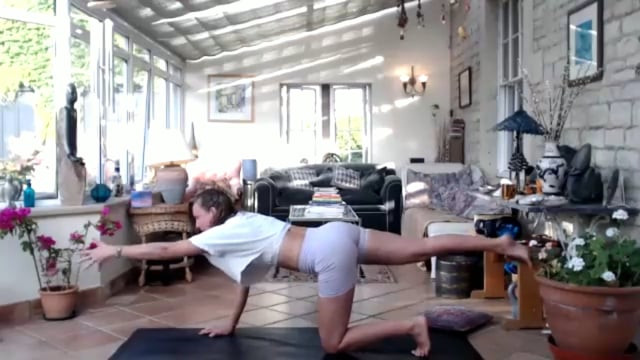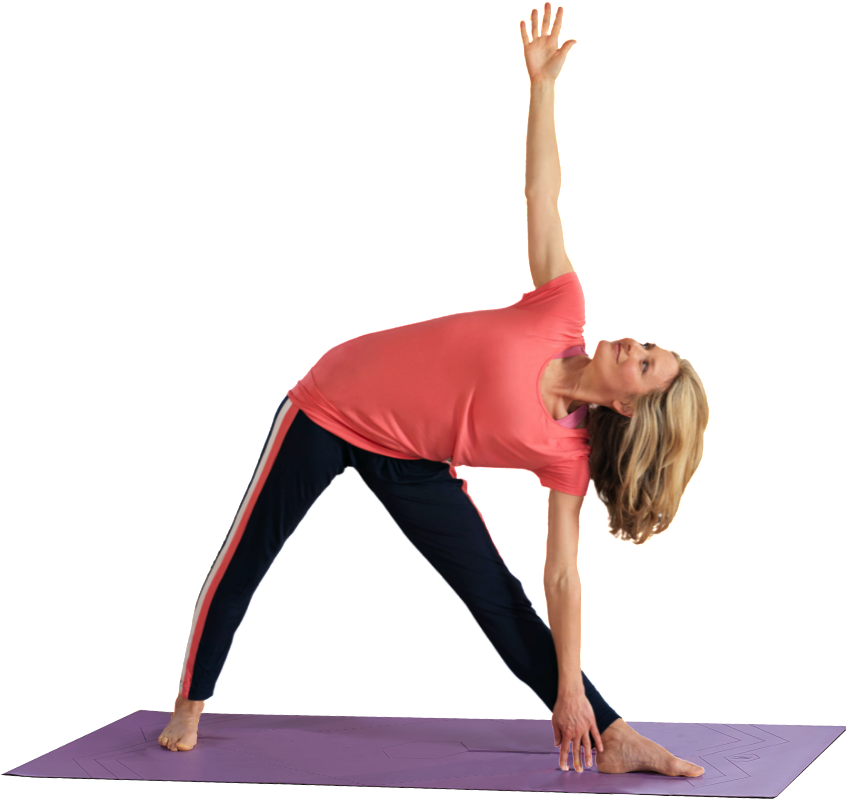Yoga Philosophy
Courses
-

Transformation Course
30 Steps
Join Zephyr Wildman to progress and extend your yoga practice with dynamic flows and deep meditations.

Ancient Wisdom for Modern Life 2
10 Steps
A 10-class course led by Adam Hocke and Mimi Kuo-Deemer inspired by Buddhism.

Ancient Wisdom for Modern Life 1
Classes
-
 44:08
44:08Philosophical Roots of Yoga Week 2: Vinyasa Yoga Flow for Chakra Awakening
Connect to the body’s subtle energy through the chakras. Practice poses linked to each chakra—root grounding squats, fluid hip openers, core strengthening, heart openers, and neck stretches—combined with breath and simple mantra to awaken and balance energy. Get an embodied experience of these energy vortexes during the practice. Recorded 11/08/25
-
 44:08
44:08Philosophical Roots of Yoga Week 1: Steady & Easeful Vinyasa Yoga Flow
"Deepen Your Practice: Explore the Philosophical Roots of Yoga" - Week 1. Find balance between strength and ease in your practice and life, inspired by Patanjali's Yoga Sutras. Grounding standing poses like Warrior II and Triangle, gentle hip openers, plus breathwork and meditation for steadiness. Recorded 05/08/25.
-
 11:03
11:03Chanting and Gratitude for a Positive Mindset
Wake up and start the day with a positive mindset from the Jivamukti method. How you start your day colours your entire day. This short morning session includes affirmations and gratitude practices to start the best way. Featuring Sanskrit chants to put us in a positive frame of mind, the class then talks us through some gratitude journaling. It’s helpful to have a notebook or journal for this class.
-
 01:13:57
01:13:57Vinyasa Flow: Space Element
This vinyasa yoga class weaves around yoga philosophy and the elements; this class works with the element of Space. Space, in Sanskrit is Akasha, the intergalactic medium that is said to be the container of all elements. It is the original element, likened to the Mother of all elements that everything came from and everything will return back to. Hatha Yogis figured out that if you create a lot of activity, you gain access to stillness in Space - that you create physical, energetic and mental effort and can abide in effortlessness on those levels. In practice we actively stretch this space and fill it with consciousness, light and awareness of awaking to the fullness of presence that is supporting us and carrying us.
-
 01:14:02
01:14:02Vinyasa Flow: Fire Element
A vinyasa yoga class weaved around yoga philosophy and the elements; this class works with the element of Fire. Fire, Agni in Sanskrit, is one of the most powerful of the elements. When we tap into its energy, we bring alive a transformation within ourselves as we build and direct the heat to the attachments you want to burn through that don’t serve you any longer. Identify what your soul longs for, that burning heart’s desires and the vision of your future you want to create. Let’s build and direct this fire to give this practice more meaning and purpose.
-
 01:11:17
01:11:17Vinyasa Flow: Water Element
A vinyasa yoga class weaved around yoga philosophy and the elements; this class works with the element of water. This mindful flow class will use a variety of standing poses to connect to the water element within you. Connecting to the many rivers and streams within the body carrying with it Prana – this light of intelligence that is healing, inspiring and transformative. We will flow like water, following the flow of breath in as we feel the swell of the body rise like a wave, and then the flow of the breath roll out like a wave returning to the vast ocean.
-
 01:07:49
01:07:49Vinyasa Flow: Earth Element
A vinyasa yoga class weaved around yoga philosophy and the elements; this class works with the element of Earth. With this practice, we will stay close to the ground, strengthening, stabilising and calming the body. This is a strong practice building structural integrity through repetitive core work to target the pelvis and shoulders. Working with Hasta (hand) Mudras, Bija (seed) Mantras and imagery of this weeks topic Earth, to inspire a practice that will leave you feeling like a majestic mountain.
-
 46:43
46:43Empowered Yoga Flow
During this intermediate vinyasa yoga class, you choose how dynamic or restful you wish the sequence to be for you. The main focus of the class making decisions based on how you genuinely feel; you can decide how you want to move your body and what is right for you in this moment. Class starts with a talk on what yoga is as a practice of empowerment and revolution, and how this relates to events in the world. How is our yoga related to the freedom we are seeking for ourselves and for others? Ava shares her thoughts on how yoga can be lived on and off the mat before moving into a sequence which includes inversions, such as headstand. Without fear, take this class, adopt the pose which is right for you and take your practice off the mat into real life. This class is trauma-informed.
-
 14:48
14:48The Eighth Limb: Samadhi
In this yoga philosophy class, we explore the concept of Samadhi. Samadhi is the eighth and final limb of Patanjali's eight limbs of yoga, and it means enlightenment. This can be quite a challenging concept for us to grasp, but it is often thought of as freedom from the limited sense of self.
-
 16:17
16:17The Seventh Limb: Dhyana
The seventh limb of yoga is Dhyana, or meditation. The eight limbs of yoga represent the path of meditation, which is considered to be the greatest tool in our yoga practice to help us experience Samadhi by understanding and mastering the mind to experience equanimity and balance.
-
 55:05
55:05Buddha's Teachings: Yoga for Sympathetic Joy
This yoga class focuses on the third aspect of the Buddha's teachings to awaken the heart, Mudita. Mudita means finding joy in the happiness and success of others. It is the third of four boundless states, or brahmavihārās. This well-rounded class has a particular focus on the hips and the hamstrings, two areas where many of us are tight due to either a sedantary lifestyle, or strengthening workouts. Being happy for others when they are happy are we are not, or they achieve things that we haven’t not the easiest practice. Indeed, ours is a world where comparison, judgement, envy and aggression are rife. Learning to be happy for someone when they are truly happy and shining usually requires a deliberate effort. When we can summon sympathetic joy, the rewards are magnificent and freeing. Through a cultivation of mudita, we can pull out the weeds of pettiness, envy and comparison. We become less selfish and self-centred, and grow into more tolerant, generous and compassionate individuals. Our actions can then create a chain-reaction, where a joyful and charitable heart ripples out into the world. You will just need a mat.
-
 08:50
08:50The Sixth Limb: Dharana
Patanjali's sixth limb of yoga is Dharana, which means concentration. This limb is all about refining your ability to focus and concentrate, so your mind doesn't wander and resist the practice.
Join the Wellbeing Revolution
This is your yoga, your way.
Build a happier, healthier, more sustainable life.
Then subscribe for £17 per month. Cancel anytime.